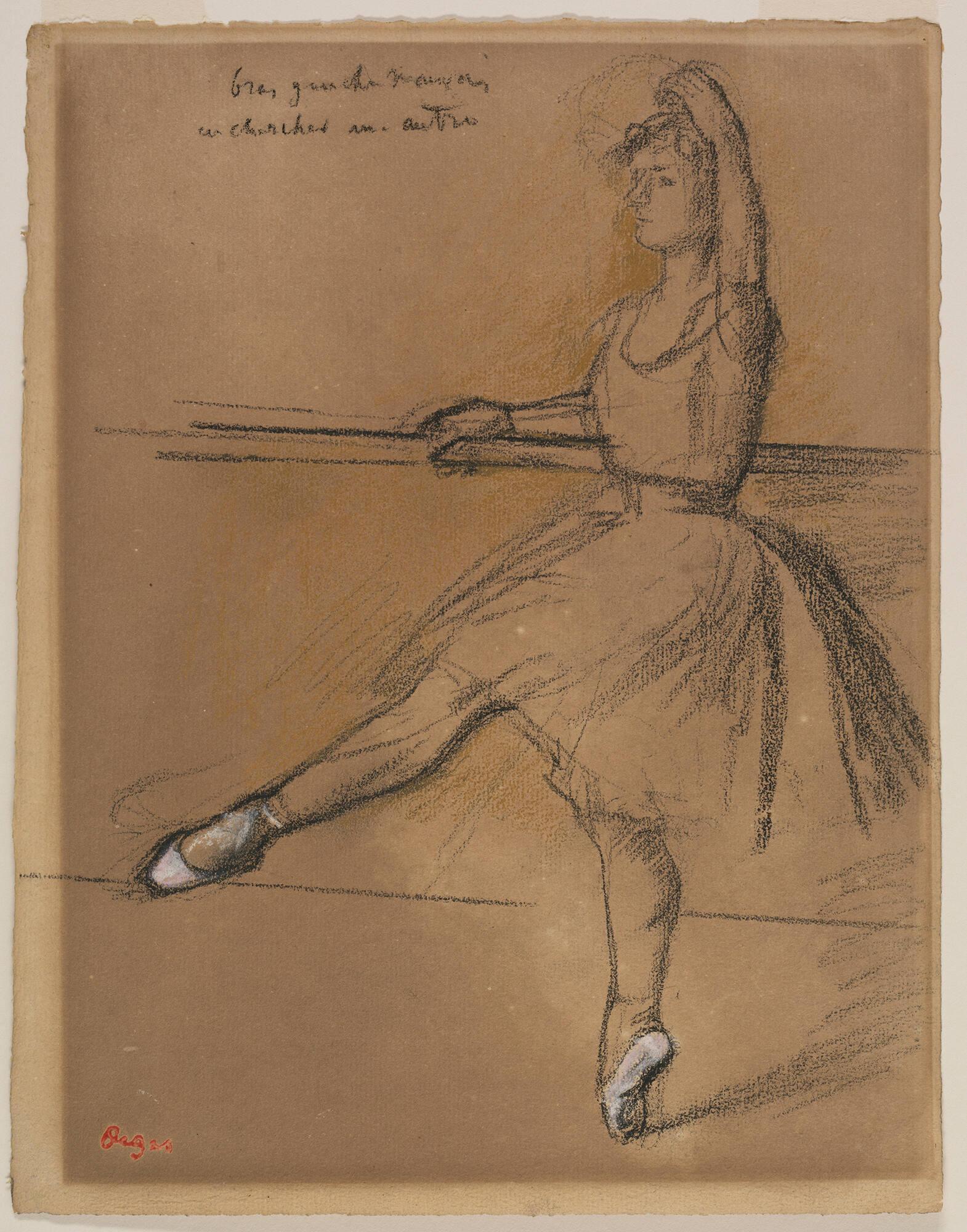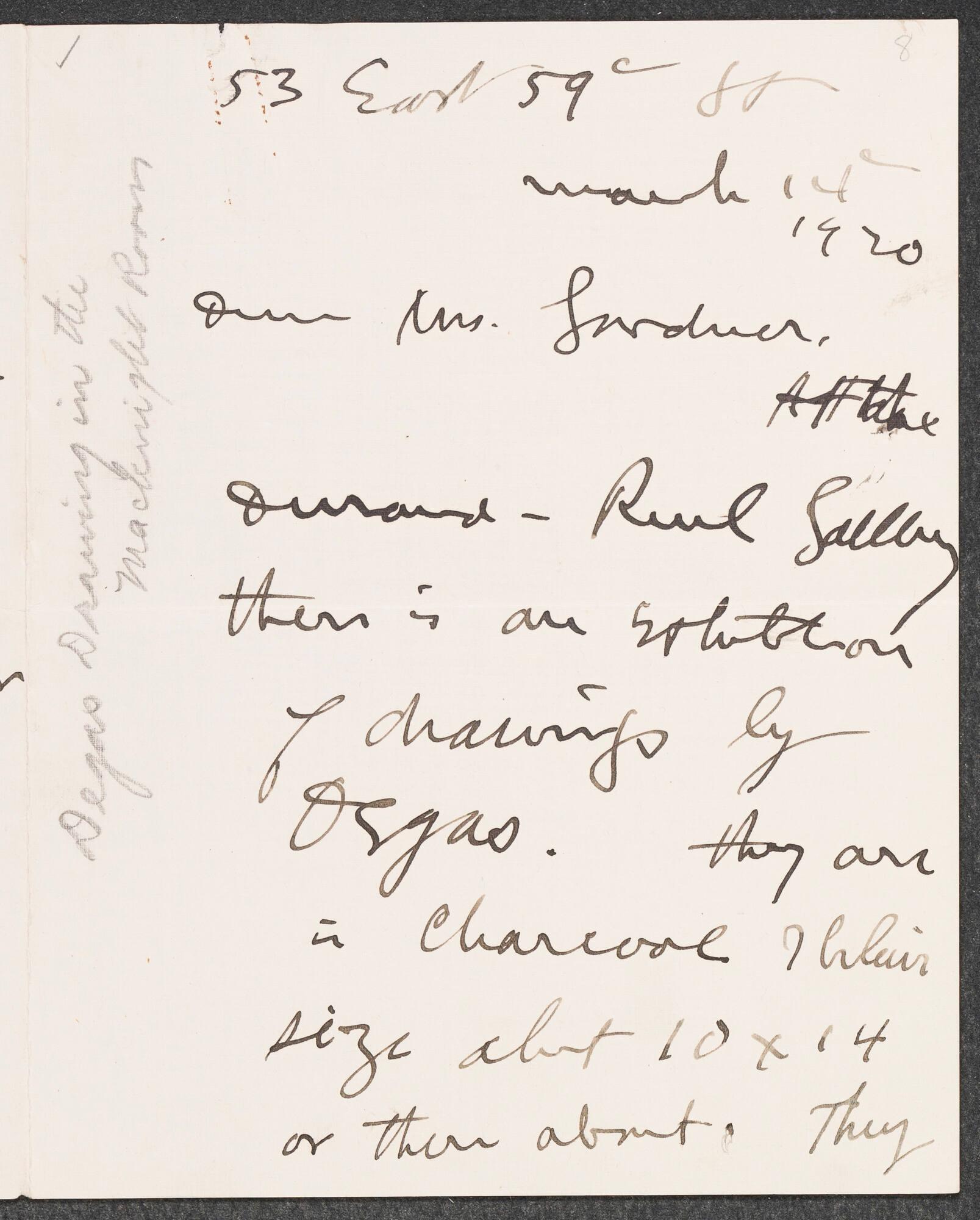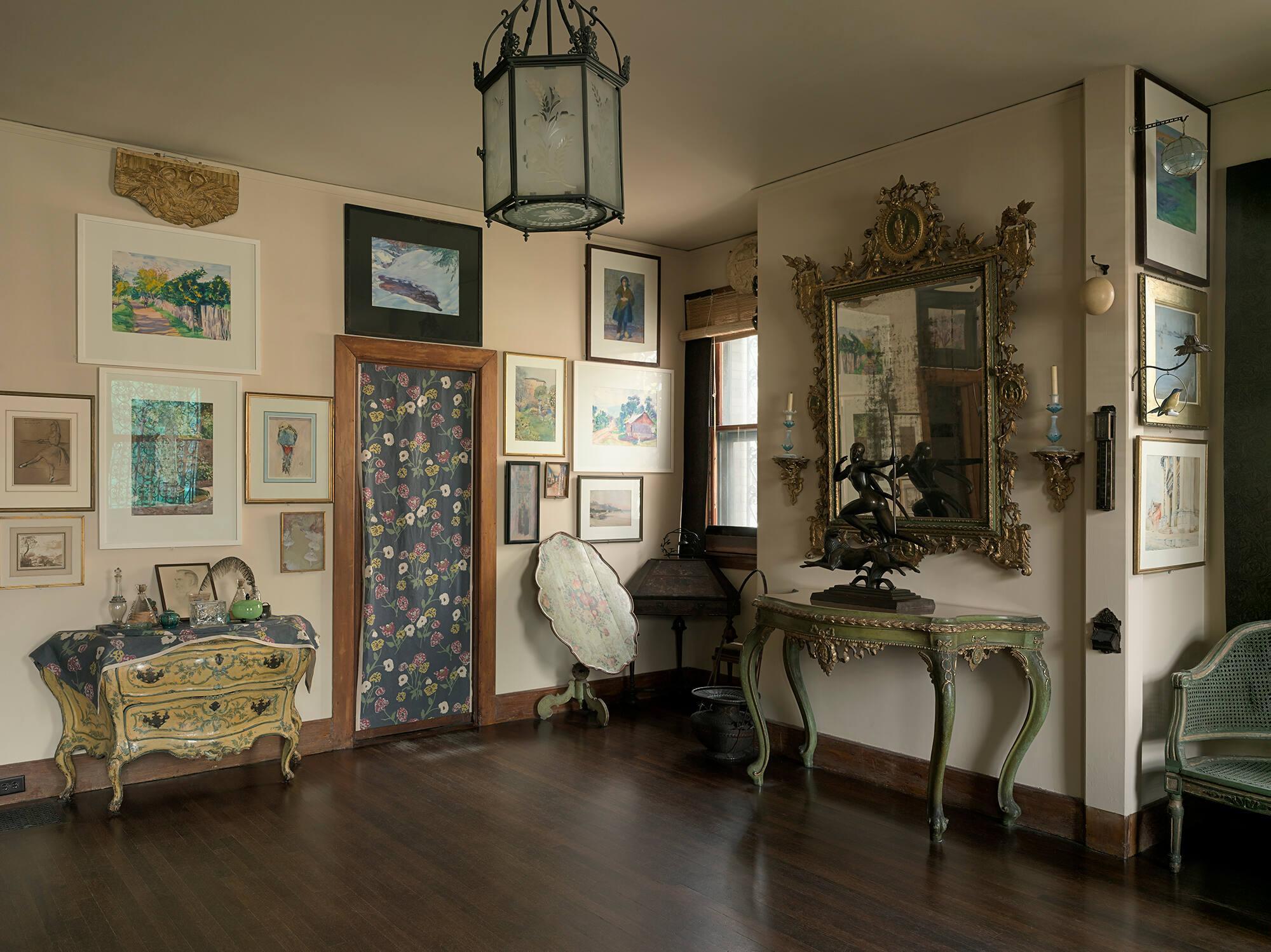“Oh, look! A Degas,” another excited visitor calls out as they step over the threshold and enter the Gardner Museum’s Yellow Room, a gallery that features nineteenth and twentieth-century art contemporary to Isabella Stewart Gardner. They approach the painting hanging at eye level only a few feet into the room, passing by me without a glance, intently appreciating the bold swipes of pastel that depict a ballerina lacing up her slipper.

Isabella Stewart Gardner Museum, Boston. Photo: Sean Dungan
The Viola d’Amore Case in the Yellow Room
As security guards, we are tasked with watching the galleries to ensure everyone has a safe and enjoyable time. We are not trained to know specific facts about the collection, however many of us learn a great deal due to our own passion for art and through spending hours in the galleries each day. It can therefore be tempting to allow corrections to escape our mouths when we hear misidentifications. For instance, this drawing titled In the Dressing Room—which elicits so much excitement, is not by the famed French Impressionist Edgar Degas.

Isabella Stewart Gardner Museum, Boston (P1e10). See it in the Yellow Room.
Louis Kronberg (American, 1872–1965), In the Dressing Room, 1910. Pastel on canvas, 60 x 49 cm (23 5/8 x 19 5/16 in.)
In the Dressing Room was created by Louis Kronberg, a Boston native and eventual friend of Isabella’s. He studied painting at the School of the Museum of Fine Arts (known as the Boston Museum School in his time) and then at the Academy Julien in Paris. Upon his return to the States, he became a staple in local art circles and by February 7 of 1906, he had become an acquaintance of Isabella.1 We know this because on that date, he gave her a sketch of pianist George Proctor, drawn on a New England Conservatory of Music program with the cheeky inscription Souvenir of Chopin. Both great admirers of music and the arts, the burgeoning friendship—and eventual professional collaboration—between Kronberg and Isabella lasted for the remainder of the Museum founder’s life.

Isabella Stewart Gardner Museum, Boston (ARC.002376)
A sketch by Louis Kronberg on the New England Conservatory of Music (established Boston, 1867 ), Program for a Recital by George Proctor, 7 February 1906. Ink and graphite on paper
In addition to creating artworks that were added to Gardner’s collection, Kronberg became her trusted art broker. He acquired some important pieces for the Museum between 1920 and 1924. Many letters housed in the collection reveal their friendly correspondence and likeminded approach to collecting.
Dear Mrs. Gardner: [...] Certainly I am very glad to let you have that picture (La Gitana) for two thousand dollars. I am more than glad you want to own it. You have always been good to me and helped me along.
[You are] the most satisfactory buyer I have ever had to deal with.
Coincidentally, Kronberg helped acquire a work by Degas, the artist who people think created In the Dressing Room. He purchased A Ballerina (Danseuse a la Barre) on Isabella’s behalf, which can now be seen in the Macknight Room. It is displayed on the southern wall, next to the door, and diagonally across from one of Kronberg’s own pieces, Souvenir of Faust (1915).
In the Yellow Room, Isabella’s curatorial scheme places Kronberg’s In the Dressing Room in conversation with another Degas in the Museum’s collection: a portrait of Joséphine Gaujelin (1867). Both of these paintings are positioned on the eastern wall and only separated by a window and one other painting, if you were to look at them from the doorway—a perspective you can experience by exploring Google Arts and Culture's virtual tour.

Isabella Stewart Gardner Museum, Boston. Photo: Sean Dungan
Isabella was full of clever designs, wit, and good humor when it came to curating her museum. I can’t help but wonder if she saw a deeper connection between these two artists, beyond their shared appreciation for theater and the depiction of performers. The pieces in the Macknight Room share a similar quality of animation and performance, such that the viewer can feel the subjects in motion—as Degas focuses on accurate form in his precise lines and Kronberg on emotion and the capturing of fluid movements in his gestural watercolor.

Isabella Stewart Gardner Museum, Boston (P11s13). See it in the Macknight Room
In the Yellow Room, we see the subjects in their own private spaces, in dressing rooms. While Degas shows Gaujelin calmly returning our gaze and Kronberg presents a ballerina anonymously looking away, focusing on her task of getting ready, both share a quiet solemnity. Gaujelin’s eyes and Kronberg’s tenacious pastel strokes both work to make the viewer aware of their position as spectator. The yellow hue to both images reflects the color of the gallery walls we stand in to see them—likely a deliberate color coordination choice made by Isabella.

Isabella Stewart Gardner Museum, Boston (P1e4). See it in the Yellow Room
Edgar Degas (French, 1834–1917), Joséphine Gaujelin, 1867. Oil on canvas, 61.2 x 45.7 cm (24 1/8 x 18 in.)
We cannot know for sure how Kronberg and Isabella would feel when a visitor eagerly approaches In the Dressing Room, exclaiming its status as a Degas. However, I like to imagine each would have a bemused appreciation for the scene. The artist might smirk because his own work has been conflated with someone whom he admired. The collector would be pleased because her placement of the piece and omission of informational plaques has made space for closer inspection of a friend’s painting, which might have otherwise been overlooked.
You May Also Like

Buy a Souvenir
In the Dressing Room Magnet

Read More on the Blog
Caned Chairs and their Conservation

Experience the Museum
The Yellow Room
1Eliot, Samuel A., Biographical history of Massachusetts: Biographies and Autobiographies of the Leading Men in the State, v. 6, (Boston: Massachusetts Biographical Society, 1913), pp. 233-34. archive.org/details/biographicalhist06elio/page/n232/mode/1up


